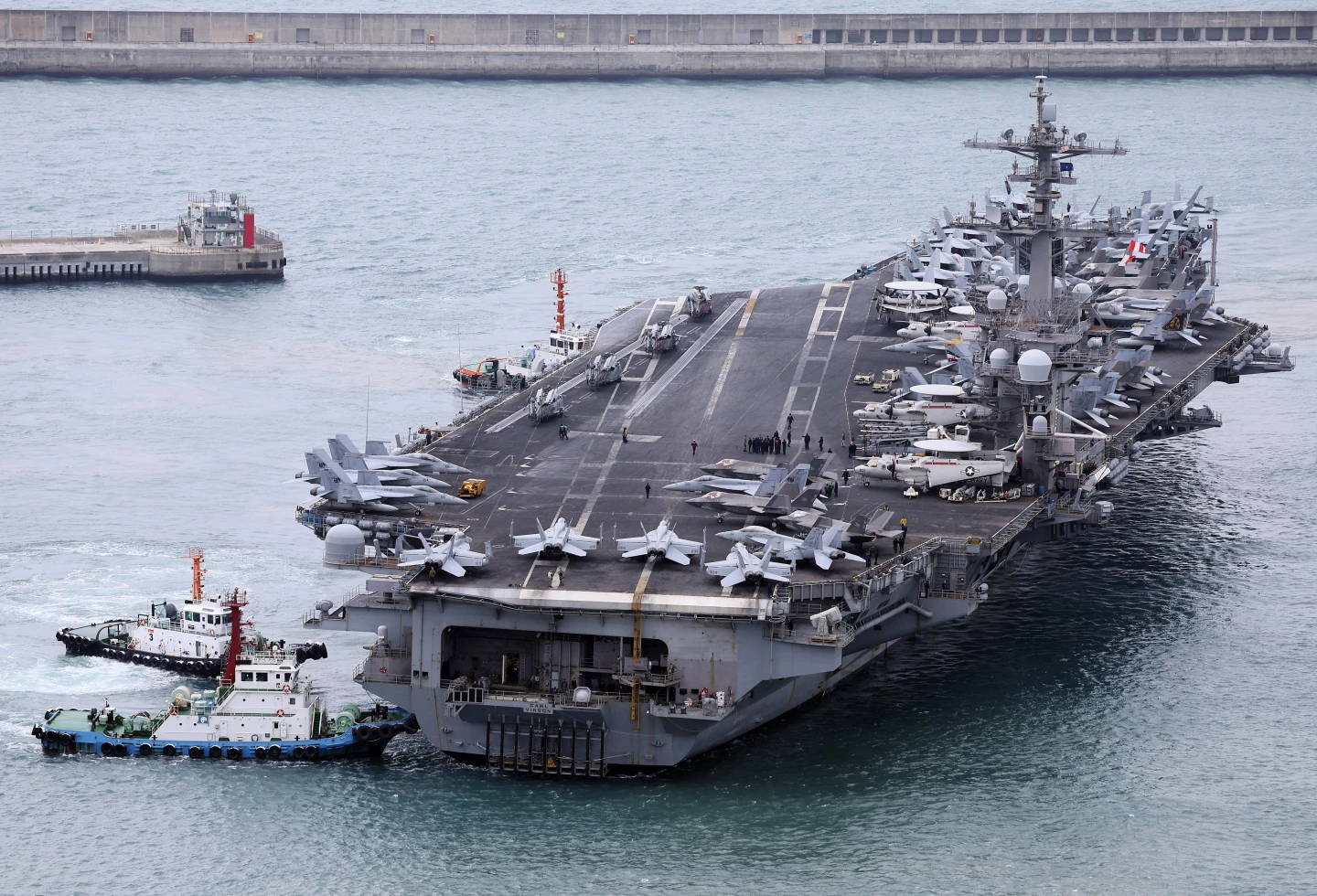The United States has significantly bolstered its military assets across the Middle East to deter potential Iranian attacks against Israel, as tensions escalate following warnings from President Donald Trump. The Pentagon has deployed additional fighter jets, warships, and refueling aircraft while placing regional bases on high alert.
In a recent social media post, Trump asserted, “We now have complete and total control of the skies over Iran.” While US officials maintain that no offensive actions have been taken against Iran, American fighter jets have intercepted incoming Iranian missiles targeting Israel. Additional refueling tankers and combat aircraft have been stationed across strategic locations in Europe, including the UK, Spain, Germany, and Greece, according to open-source intelligence monitors.
Defense Secretary Pete Hegseth emphasised that these movements aim to “ensure that our people are safe.” However, officials declined to disclose exact deployment numbers.
US naval forces have actively engaged in neutralising Iranian ballistic missile threats. The USS The Sullivans and USS Arleigh Burke successfully intercepted missiles over the weekend, with the USS Thomas Hudner joining operations in the Eastern Mediterranean. Meanwhile, the USS Carl Vinson carrier strike group remains positioned in the Arabian Sea, safeguarding US interests near the Gulf of Oman and Persian Gulf.
The USS Nimitz, en route from the Indo-Pacific, is expected to replace the Carl Vinson by month’s end, potentially creating a temporary dual-carrier presence in the region. Additional destroyers are conducting exercises in the Baltic and Red Seas.
Approximately 40,000 US troops are currently stationed in the Middle East, up from the usual 30,000, reflecting heightened tensions. Military dependents have been given the option to voluntarily leave bases as a precaution, though officials report minimal departures so far.
The US Air Force’s B-2 Spirit, capable of delivering the 30,000-pound GBU-57 “bunker buster” bombs, remains a key deterrent against Iran’s underground nuclear facilities. While no B-2s are currently in the region, B-52 bombers at Diego Garcia stand ready for smaller strikes. If deployed, B-2s would require a 30-hour round trip from Missouri, with mid-air refueling.
The buildup underscores Washington’s commitment to defending Israel while avoiding direct conflict with Iran. However, Trump’s rhetoric and military posturing have raised concerns about a potential escalation. Analysts warn that any preemptive strike on Iran’s nuclear sites could trigger a broader regional confrontation.


